“The important thing is not to stop questioning. Curiosity has its own reason for existing.” -Albert Einstein
After a wide-ranging week here on Starts With A Bang, it's only fair to take a look at what conversations this has sparked among all of you, and to jump in where there's a good opportunity to add even more amazing stories about the Universe into the mix. In case you missed anything, this past week saw us cover the following topics:
- Could a manned mission to Mars abort? (for Ask Ethan),
- The ultimate fighter... of stains? (for our Weekend Diversion),
- The most elusive globular cluster, M55 (for Messier Monday),
- The strangest theory we know is true (by contributing writer Brian Koberlein),
- CMB part 1: the "smoking gun" of the Big Bang (by contributor Amanda Yoho),
- Preparing for Alien Life, and
- How big is our observable Universe? (for Throwback Thursday).
You've had a lot to say, particularly about Mars, Relativity, Alien Life and the Observable Universe, so let's dive on in to the latest edition of your Comments of the Week!
From Michael Kelsey on the subject of traveling to Mars: "I wish I knew more celestial mechanics! Is it really the case that the Hohmann transfer orbit tracks the departure planet? Your diagram shows a “Mars flyby” where the return path meets up directly with Earth’s position at that time. Does that flyby involve a change in velocity, or just (effectively) no hitting Mars?"
Imagine you've got two perfectly circular orbits around the Sun, where one orbit is farther out than the other. This could be representative of Earth and Mars, for example, or of Earth and Venus, if we wanted to consider ourselves as the outer planet. The inner orbit has a total amount of energy that's less than the outer orbit; in other words, we'd need to boost to a greater speed to reach it, while if we were the outer orbit, we'd need to strip some of our speed away. The idea of a Hohmann transfer orbit is that, while you're in the orbit of the inner (or outer) planet, you change your velocity so that your orbit becomes very elliptical! When you reach perihelion (or aphelion) in your orbit, you'll intersect with the orbit of your original planet, but when you reach aphelion (or perihelion), you'll run into the new planet, the one you were attempting to reach!
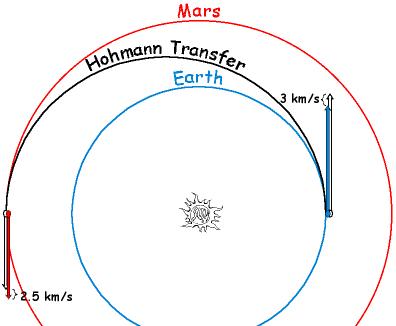 Image credit: Hop David via http://clowder.net/hop/TMI/HypVel.html.
Image credit: Hop David via http://clowder.net/hop/TMI/HypVel.html.
Now, timing is especially important here, because it's vital that you encounter the target planet when it's actually there in its orbit; simply intersecting with the planet's orbit if the planet isn't there is worthless! In the particular case of the flyby alluded to, you would need a gravity assist -- taking advantage of the Oberth effect -- to actually make it back to Earth when it's at the right location in its orbit. (Alternatively, you could give an additional boost, as shown above, to remain in a stable orbit with the new planet.) Still, it's possible to do a fly-by and return to the original planet with a practical amount of fuel, which is pretty amazing! That's the kind of manned mission to Mars that, with a modest budget and our present level of technology, I could easily get behind!
Image credit: John D. Norton, via http://www.pitt.edu/~jdnorton/teaching/HPS_0410/chapters/Special_relati….
From DavidL on the strangest theory (relativity) we know to be true: "Surely the animation shown completely mises the point.. The mirrors shown are moving in a linear fashion, distance to the observer must therfore be changing, and there must be a component of velocity to produce a doppler shift without time dilation."
The beauty of an experiment like this is that it's performed in our heads: a gedankenexperiment. If you imagine watching these two light-clocks from a distance that you can easily reach, then yes, DavidL, your concerns will be completely valid, and will influence the experiment. But we can imagine either of the following two scenarios, if it makes us feel better:
- The light clocks are arbitrarily far away, so that the change in the distance to the observer is negligible, and so are those Doppler shifts you refer to.
- The light clock that moves relative to you does so along a circular path centered on you, removing any Doppler shift at all.
But it's important to remember that we're attempting to capture the most important effect in the system, which is the way physics progresses. We design an experiment or test that should show a departure from the currently accepted theory, and then we figure out the primary cause of that new effect. "Completely misses the point" is a completely unfair assessment.
From MandoZink on the same topic: "What is possibly the strangest effect of time dilation is that a photon, traveling at C, experiences no time at all. A star’s light may have been traveling towards us for 10 billion years, but from the photon’s perspective, the instant it was emitted it was immediately detected by the observer on earth, 10 billion light years away."
This is one of the things that defies our intuition about relativity, and is also one of my personal favorite things about it. Imagine that you want to travel to a star 10 light years away. Its distance is defined as 10 light years because if something moved at the speed of light, it would take ten years to reach us. So, you reason, if you move at 0.01% the speed of light, it will take 100,000 years to get there. To an excellent approximation, this is true. If you moved there at 0.1% the speed of light, you'd think it would take just one tenth the time: 10,000 years. Again, very good. But if you moved at 1%, or 10% the speed of light, you'd start to notice slight changes. You see, it wouldn't take merely 1,000 or 100 years, but there would be some slight discrepancies between what you experienced on the spaceship and what someone here on Earth would see. Because as you move close to the speed of light, the distance that you need to travel appears to contract, and as you move closer and closer to the speed of light, the rate that time passes for you slows down as well. This results in some very strange phenomena as you get really close to the speed of light!
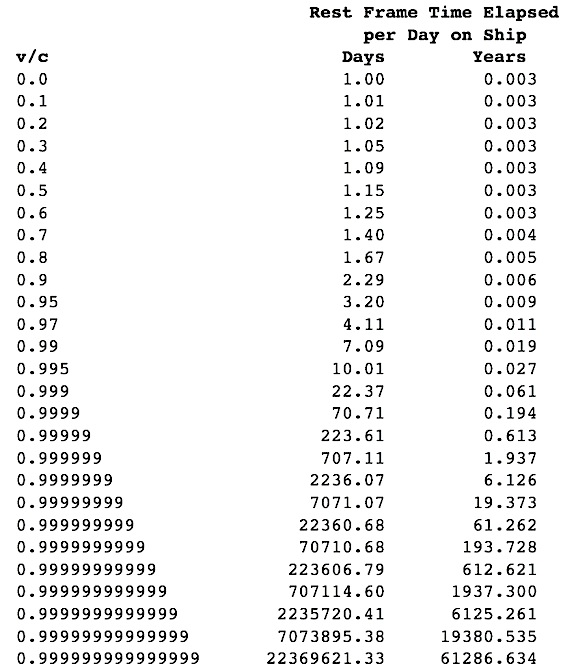 Image credit: Rhawn Gabriel Joseph, via http://cosmology.com/TimeTravel1.html.
Image credit: Rhawn Gabriel Joseph, via http://cosmology.com/TimeTravel1.html.
If you look at the bottom row, above, what this states is that if an object moves at 99.9999999999999% the speed of light, an external, stationary observer would need to experience more than 60,000 years in order for just a single day to pass on the ship. As you get closer and closer to the speed of light, you start to see that the Universe becomes much smaller (as distances contract), while external observers see your clock as becoming arbitrarily close to stopped. Extrapolating to a photon, or any object that moves at the speed of light (a null vector in relativity), we find that all distances contract down to zero length and all "clocks" stop completely.
If you were to ever reach the speed of light, you'd instantaneously encounter whatever it was you smashed into, or -- if you encountered nothing -- the end of the Universe, whatever that looks like.
From Michael Fisher on the topic of alien life: "Here we show that lifeless habitable zone terrestrial planets around any star type may develop oxygen-dominated atmospheres as a result of water photolysis, because the cold trap mechanism that protects H2O on Earth is ineffective when the atmospheric inventory of non-condensing gases (e.g., N2, Ar) is low. Hence the spectral features of O2 and O3 alone cannot be regarded as robust signs of extraterrestrial life..."
We have to be careful not to fool ourselves; just because the Earth is the only planet in the Solar System with large amounts of molecular oxygen, and we know that molecular oxygen is highly reactive with hydrogen or hydrocarbon (e.g., methane) gases, we often take it for granted that the only way to produce large amounts of oxygen is through biological processes. After all, molecular O2 was virtually non-existent on Earth until certain single-celled organisms starting producing it as a waste product, eventually filling our atmosphere with it.
But there are other ways to make oxygen in trace amounts: UV-photodissociation of other molecules such as CO2 or H2O could do it under the right conditions. If you contrive the right conditions -- such as an atmosphere that had virtually no non-condensing gases such as Nitrogen or Argon -- you might be able to build up significant amounts of O2 by other, abiotic means.
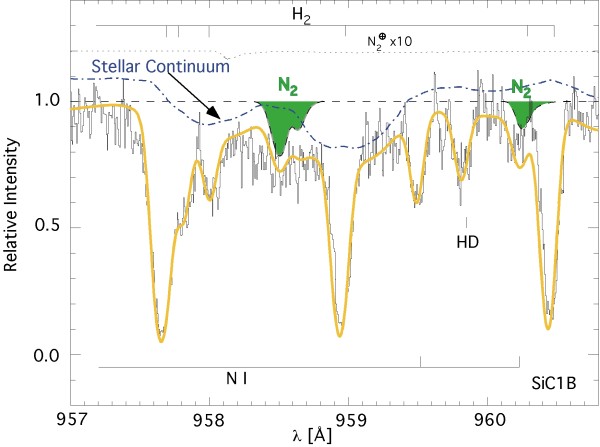 Image credit: B-G. Andersson, JHU, via https://archive.stsci.edu/fuse/scisumm/sci_n2.html.
Image credit: B-G. Andersson, JHU, via https://archive.stsci.edu/fuse/scisumm/sci_n2.html.
But even though Nitrogen, for example, is virtually non-reactive in the visible and infrared portions of the spectrum, it does have a characteristic UV-absorption signature, something we've seen in interstellar space for the first time just a decade ago! We want to be sure that we don't fool ourselves, but the detection of Oxygen gas around an extrasolar planet would -- and should -- set off a firestorm of research on the composition of that atmosphere.
Like I said, if we're lucky, the first signs of alien life could be a lot closer than most of us ever imagined.
And finally, from Sinisa Lazarek on how large the observable Universe is: "Just one addition, not only how long, but also what was the size of the patch. It could have been half the size of proton, but it could have been a light year. The outcome is the same… beyond our visible, causal horizon, there can be many more of same stuff as here, or can be something different… but if inflation is correct.. it’s infinite to the future."
The fun thing about speculating about the unobservable Universe is that we know only how big our observable Universe is, and also only about the final tiny fraction of a second that our Universe underwent inflation. The known unknowns, to put it, include:
- How much farther our unobservable Universe continues, with properties identical to the observable part.
- How long to the past inflation existed in the region that gave rise to our own.
- Whether inflation ended everywhere in that region the same, or whether it continues eternally in some of those regions.
- How large the portion of the Universe that began inflating was initially, or whether inflation was truly eternal to the past.
This last portion, however, is something we can speak of intelligently. You see, whether the entire Universe began inflating together, or whether it was just a small portion of the Universe that began inflating shouldn't matter all that much. Once inflation begins in one region, that region in short order becomes arbitrarily close to 100% of the entire (unobservable) Universe!
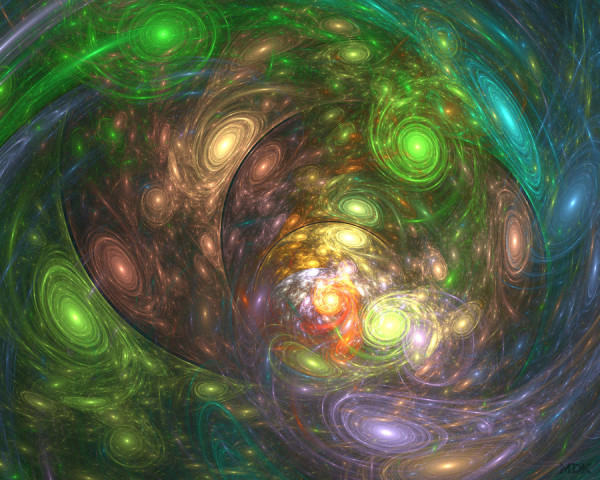 Image credit: Frac 33 by MDK fractal of deviantART, via http://mdk-fractal.deviantart.com/art/Chaotic-Galaxies-Frac-33-94798090.
Image credit: Frac 33 by MDK fractal of deviantART, via http://mdk-fractal.deviantart.com/art/Chaotic-Galaxies-Frac-33-94798090.
Pre-inflation, some regions might have been expanding, contracting, oscillating, filled with viscous, shearing fluid, etc. It doesn't matter. What matters is that one region, no matter how small, had the right conditions to begin inflating, and then everything else, in short order, is dwarfed by the now humongous inflation region.
This is why I always say that, no matter what came before inflation, inflation wipes that information out. As much as I hate to say we'll never know what came before it, we have to at least admit the possibility that, just as there's a limit to the total amount of information in our finite, observable Universe, there are likely to be some questions that the Universe doesn't provide us with enough information to answer. And this may be one of them.
Thanks for a great week of comments; let's strive to make the next one even greater!

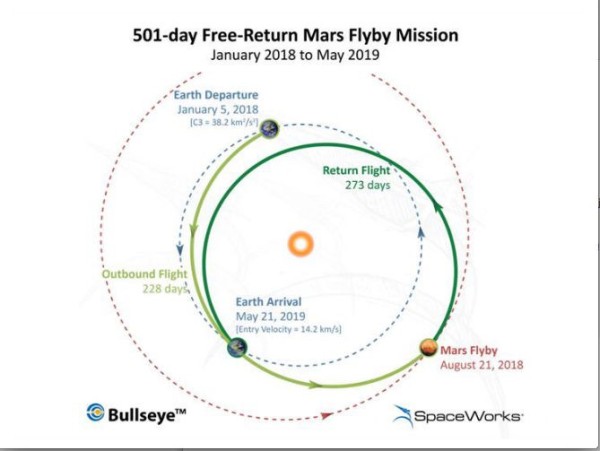
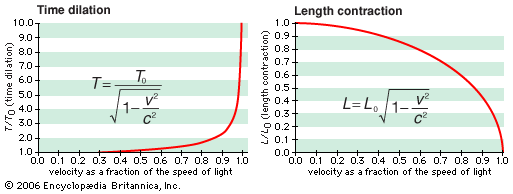
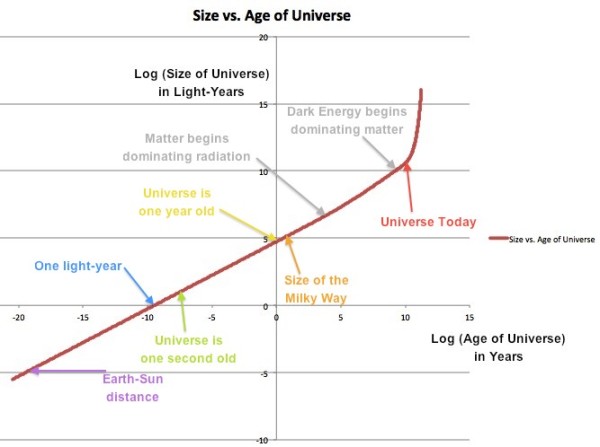
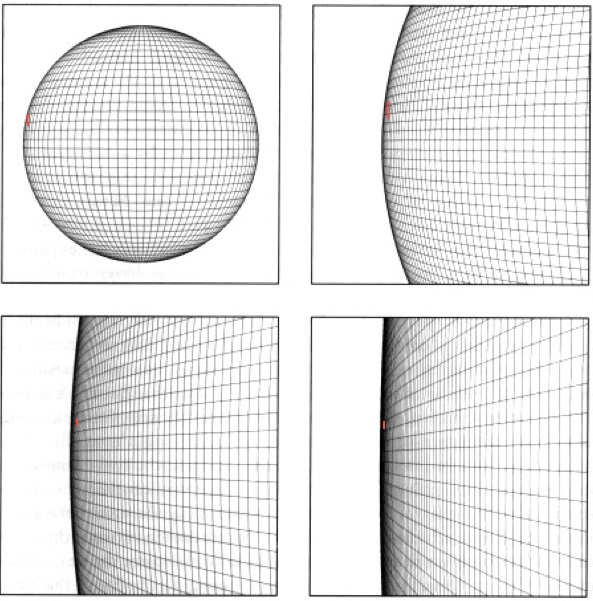
Splendid stuff, Ethan.
Two things:
1) Under what conditions, and with what apparatus, would it be possible to detect light from the dark side of a planet? Would that detection capability also entail the means to determine if the spectra observed were consistent with artificial light as distinct from various known or hypothesized forms of bioluminescence?
The point being, it would be worthwhile to launch something that had the capacity to detect the unmistakable evidence of a technologically capable civilization.
2) Consider a space ship operating within the current Standard Model, and achieving an average speed of 2% of c over a voyage of 50 LY (here we assume positive and negative values for acceleration at the beginning and end of the trip respectively, and a maximum speed high enough that the totality of the trip averages to 0.02c).
The naive expectation is that the trip would take 2500 years. But approximately what duration of time would be experienced by the (many generational) inhabitants of the ship, and what duration of time would pass on Earth before we could expect them to send us a signal at the end of their voyage? (We assume that once they've sent the signal, it takes 50 years to reach us; I'm just interested in the time at which the signal is first sent.)
And/or how could I create the relevant equations in simple algebra suitable for use in a spreadsheet? (Yes, I'm trying to come up with estimates for interstellar voyages, ark ships, and the like, without assuming "new physics" but assuming presently-unavailable new technology within existing physics.)
To get slightly more complicated about that, assume maximum values of acceleration that produce the equivalent of 1.2 times Earth gravity onboard. The point of this being to enable calculating various "total travel times" for a given value of acceleration at each end, and a given maximum percentage of c in the middle of the trip.
In your post, "How Big Is the Entire Universe", you mention that:
"If the Universe does curve back and close on itself, its radius of curvature is at least 150 times as large as the part that’s observable to us!"
Could you please explain how you came up with the "150 times as large" value ?
Thanks a lot.
@G #1:
1) We've already done that, in a few limited cases. With an exoplanet which transits its star, you can take the spectrum of the star alone, and subtract it from the spectrum during transit, and the residue should be the spectrum of the planet's night side. There are *LOTS* of technical complications around normalization, detector noise, etc., but that's the basic idea.
2) You can definitely do what you want in Excel. Just choose time steps (for each row) that are small enough that the velocity change is manageable. Then you can apply the Lorentz equation to the average velocity of each step. The steps in the spreadsheet approximate the actual integration you'd need to do for continuous acceleration.
@Cosmonut #2: That estimate comes from the current best fit to LCDM parameters, which give Omega = 1 +/- 0.007. Omega is the ratio of the average density of the Universe to the density required for the Universe to be exactly flat. Omega 1 is "closed" (i.e., the expansion will stop, turn around, and collapse).
I think Ethan is translating the 7 per mil (~ 1/150) uncertainty into a limit on what the curvature could be. It's a bit simplistic (a true lower limit really needs the full likelihood function for Omega, and ought to use either a 90% or 95% confidence level, not a 1-sigma uncertainty), but it's not invalid.
@Michael#4: Thanks for that. I searched around and am finding a lot of different estimates which is confusing.
For eg: A paper claims a lower bound of "251 Hubble volumes" for the volume of the universe (?) which would give a radius of curvature only about 6 times larger.
Just a technicality:
"Omega 1 is “closed”
Do you mean, Omega 1 is exactly flat - ie, radius of curvature is infinity
@Cosmonut #5: Yes, I have seen many different "estimates" in the literature. It really depends on which data you choose to try to set your lower limit -- searching for pattern replication in the CMB, values of Omega, or something else.
As for your last question, it seems that the commenting software here doesn't like comparison operators :-/ That statement was supposed to be 'Omega (greater than) 1 is "closed"'. So large Omega corresponds to a Universe which expands for a while, then stops and collapses. Omega (less than) 1 is an "open" universe, where the expansion never slows to zero. Omega exactly 1 has a flat Euclidean metric, and (in the absence of dark energy) would have an expansion which asymptotes to zero.
We do need to be a bit careful about equating "flat" with "infinite radius" -- that is, assuming that the universe is ball-shaped. Mathematically, a torus has zero curvature, but is still a finite volume (hypersurface). It's possible for the universe to be "flat," but still finite.
This site is good
This site is good
http://larsjaeger.ch/
Michael, thanks; looks like I've got a bit of work ahead of me to do that in Excel but it'll be an interesting exercise. If I manage it, I'll post the results as a comment so you can have a good laugh and tell me where i screwed up;-)